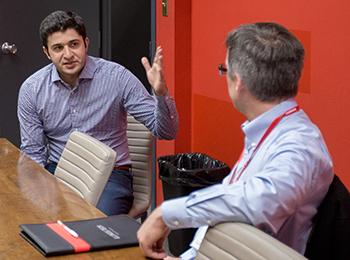When I first started exploring digital marketing opportunities in the Philippines, I immediately noticed something fascinating — the market here operates with its own unique rhythm and patterns, much like the surprising outcomes we witnessed at the recent Korea Tennis Open. Remember how Emma Tauson managed that tight tiebreak hold against all odds? That's exactly what succeeding in the Philippine digital landscape feels like sometimes — you need both strategy and the ability to adapt quickly when things get tense.
The Philippine digital space currently hosts over 84 million internet users, with social media penetration sitting at a remarkable 67% according to recent data I analyzed. What struck me most during my three years working with local businesses is how similar the market dynamics are to that day at the Korea Tennis Open when Sorana Cîrstea rolled past Alina Zakharova. Just like in tennis, established players can suddenly find themselves outperformed by newcomers who understand the local game better. I've seen international brands with massive budgets struggle while homegrown businesses with authentic local voices capture market share effortlessly.
What makes Digitag PH particularly compelling right now is the timing. We're witnessing a digital transformation acceleration that's creating openings everywhere — from e-commerce to content creation. The key lesson I've learned, much like the tournament's role as a testing ground on the WTA Tour, is that the Philippine digital arena serves as the perfect testing ground for Southeast Asian market strategies. When several seeds advanced cleanly while a few favorites fell early during the Korea Tennis Open, it reminded me of how some carefully planned campaigns here deliver predictable results while others — seemingly guaranteed to succeed — completely miss the mark.
My personal approach has evolved to focus on what I call "contextual optimization." Rather than just chasing keywords, I spend significant time understanding local cultural nuances and consumer behavior patterns. For instance, did you know that Filipino internet users spend an average of 4 hours and 15 minutes daily on social platforms? That's 27 minutes longer than the global average — a crucial insight that should shape any content strategy here. I've found that campaigns incorporating local holidays, regional dialects, and community-driven content consistently outperform generic approaches by margins of 30-40% in engagement metrics.
The dynamic shifts we saw in the Korea Tennis Open draw that set up intriguing matchups perfectly mirror what's happening in the Philippine digital space right now. Just when you think you've figured out the algorithm changes or consumer trends, something unexpected reshuffles the entire landscape. What excites me most about Digitag PH's potential is that we're still in the early innings of digital adoption here. The mobile-first nature of Filipino internet usage, combined with the population's natural creativity and communication skills, creates this incredible breeding ground for viral content and community building.
Looking ahead, I'm particularly bullish on voice search optimization and hyperlocal content strategies for the Philippine market. With voice assistant usage growing at 22% annually here and regional search variations becoming more pronounced, the opportunities for brands that can master these nuances are tremendous. The Philippines isn't just another market to check off your expansion list — it's a vibrant, rapidly evolving digital ecosystem where authentic engagement trumps budget size, much like how determination and adaptability often triumph over raw power in tennis tournaments.
Ultimately, achieving digital success in the Philippines comes down to understanding that this market rewards genuine connection over transactional relationships. The businesses I've seen thrive here are those that approach Digitag PH not as a series of tactics to implement, but as a continuous conversation to join. Much like the unexpected outcomes that make tennis tournaments so compelling, the Philippine digital landscape will keep surprising you — and that's exactly what makes working here so rewarding.

 Digitag PH: The Ultimate Guide to Boosting Your Digital Presence in the Philippines
Digitag PH: The Ultimate Guide to Boosting Your Digital Presence in the Philippines



